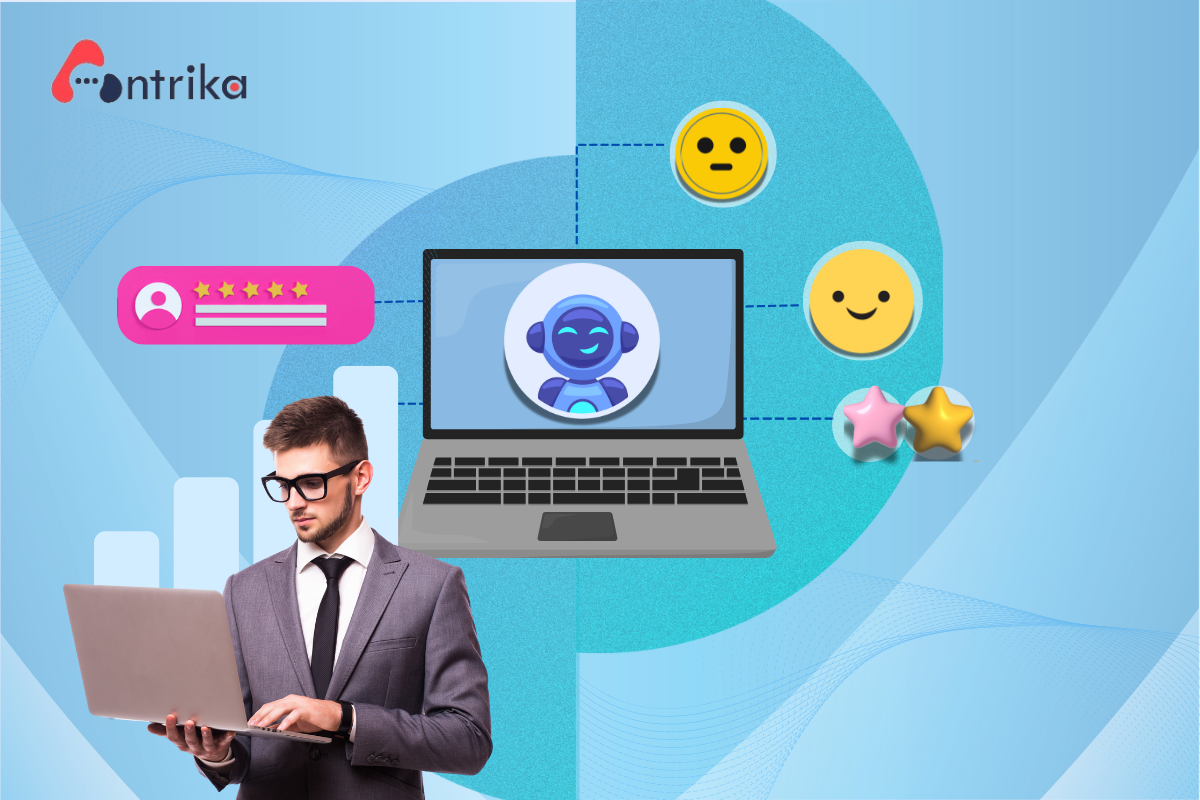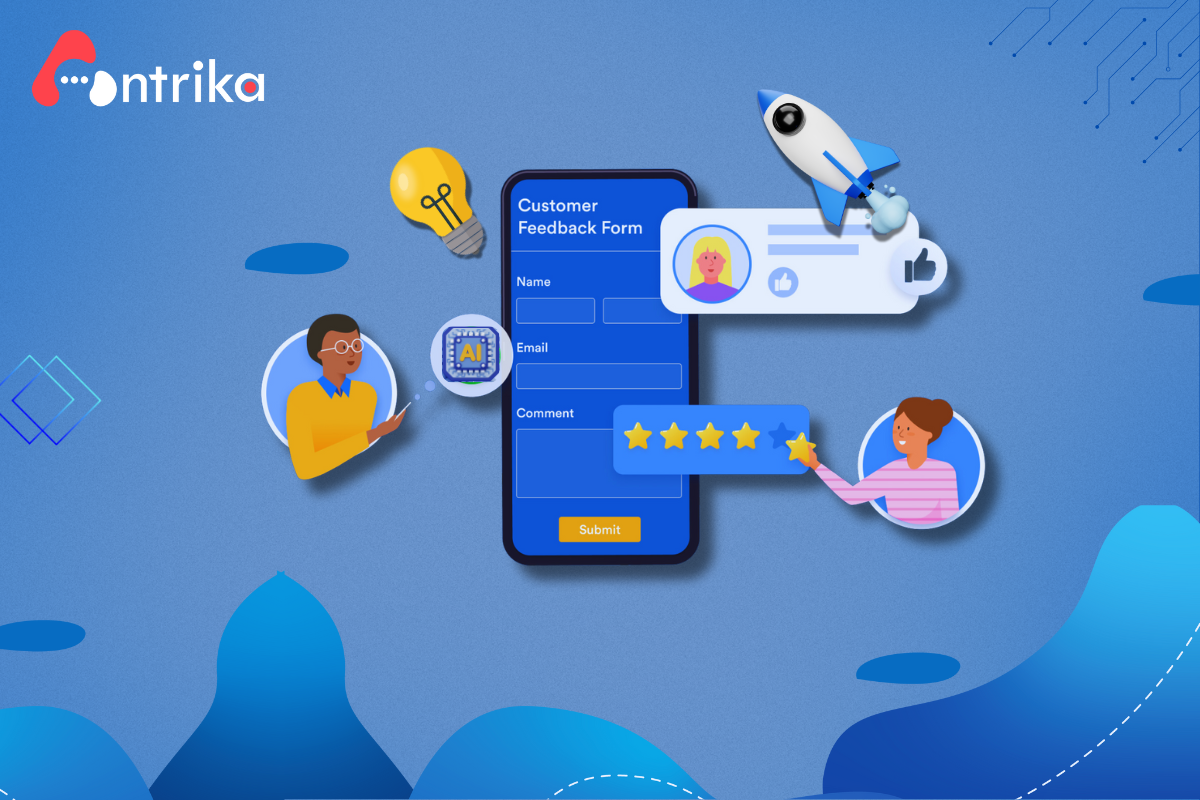
How to Utilize Customer Feedback to Craft Personalized Customer Experiences
Let’s imagine you launched your new product or services to the market and are excited to hear from customers what they feel about the product that you put hours and months of effort into crafting. But what if we told you that your customers refuse to like your product because it does not meet their needs and expectations? That’s why it’s essential to understand and hear what your customers seek and identify your current product or service loopholes through customer feedback tools.
By collecting insights directly from your customers, you can gain valuable data to improve your current product or services or launch a new solution that meets your customer’s expectations and demands, catering to a better customer experience.
However, to personalize the customer experience, every organization needs to understand what customers want from your company, the current lenses in your customers’ lives, and how your offerings can solve their problems at the right time. The answer is asking your customers or observing what they say, positive or negative, to analyze your previous strategies and product development procedures. However, you can simplify offering improved customer experience with a centralized solution like a feedback management system .
Sounds interesting? In this blog, we will walk you through the role of feedback in crafting personalized customer experience and every essential factor associated with it for your better understanding. Keep reading to learn more about how to collect customer feedback for a better customer experience or what customer feedback management pricing is.
What is a Personalized Customer Experience?
As per McKinney’s Next in Personalization 2021 report, companies that customize customer experiences have the potential to maximize revenue by up to 40%. This means by personalizing customer experiences, organizations can deliver better products and services, increase customer satisfaction, and build trust and loyalty.
However, personalization of customer experience includes collecting customer feedback and utilizing it throughout the touchpoints with marketing, sales funnel, and product development cycle to improve offerings and ensure they reach the target audience.
A personalized experience can include modifying your current product or services with little customization to keep your customers engaged with your brand and boost satisfaction.
For instance, the Spotify Wrapped feature is an annual campaign where Spotify shares a list of listeners’ top artists, songs, and genres in a shareable graphic, making the audience choose Spotify over other options and generating satisfaction and loyalty.
Tap to Explore more: Customer Feedback | Product Development | All in one Centralized SaaS Services
How can Businesses Personalize Customer Experiences with Customer Feedback Tool?
1. Identify the Right Time and Method to Collect Customer Feedback
To enhance customer experience, your first step should include collecting feedback from your current customers. But make sure that your feedback collection stage revolves around the right time. For instance, if you ask for feedback too early or late or implement a method unsuitable for your audience, you may fail to gather insightful data. Hence, identifying the correct method and timing to stay relevant to your audience is essential.
If you are wondering how to determine the right time for customer feedback, consider collecting feedback when your customers better understand your product or services. For instance, when your customers have engaged with your product or service for a certain period, they can give better input on whether your offerings meet their needs and expectations. You will not get valuable insights if you collect feedback too soon after launching your product.
When considering an accurate method, you must understand where your audience stays active or engaged. It can be social media, email newsletter, or you can consider accessing feedback through brief surveys, interviews, and more. However, another beneficial method can be a centralized customer feedback tool wherein organizations need to invite customers to share feedback, and it allows other customers to like, comment, and vote on specific feedback to help organizations prioritize and categorize valuable data.
2. Evaluate and Interpret Customer Feedback
Once you collect feedback, consider categorizing insights to make informed decisions using a feedback management system. However, to begin with, I evaluate customer feedback and organize, prioritize, and categorize data based on themes. A robust software like Antrika helps recognize common themes and bifurcate data per specific categories to help you see how you can improve your offerings to provide a personalized experience.
Later, utilize feedback data to understand standard patterns and trends in feedback – like recurring feature requests, repetitive complaints, suggestions, or several votes and likes received through customer feedback platform. This process can help you create customized charts or graphics to highlight common concerns reported by customers or to understand customer’s needs.
Furthermore, it is essential to understand market trends and patterns to check whether your implemented changes positively impact the customer’s life. You need to keep your eyes on trends frequently because it will help you understand how your customers’ preferences, needs, and expectations are changing and how you must make continuous improvements that align with their expectations.
For instance, let’s assume you offer software to optimize attendance and administrative workflow. With feedback insights, you realize that your customers face challenges integrating software data into their systems.
Firstly, you will introduce an automated integration feature in the software for extracting data, plus offering customized notifications to remind employers and employees to complete certain tasks with satisfaction and solve their problems with ease.
3. Implement Suitable Solutions Based on Feedback Data
Once you gather valuable customer feedback insights, you can turn your roadmap details into action. Ensure you address your customers’ concerns and improve their experience with your new product improvement strategy.
To implement the right solutions, consider prioritizing the areas that need attention. How? By identifying common analyzing complaints and regions with a higher potential to increase customer satisfaction and your company’s profitability.
Align your team members with the roadmap details to foster seamless collaboration and crafting error-free solutions. Once your product or service is ready to launch, don’t forget to notify your customers about updated solutions through changelog or effective release notes by accessing a feedback management system .
Your job doesn’t end here! After implementing and launching changes, you need to track results by monitoring customer feedback and opinions or measure metrics to understand the effectiveness of the changes you made in the customer’s life. Ultimately, every organization must adapt continuous development and improvements to provide customized customer experience to boost retention and satisfaction.
4. Track your Business Profitability and Customer Experience
As we mentioned above, measuring the impact of changes implemented and using the feedback data received by customers aids in fostering a culture for continuous improvements and makes your customers feel valued.
However, most companies find monitoring a project’s effectiveness and impact on customer experience challenging. One method includes building metrics and goals aligned with customer’s needs and expectations. This approach contains metrics like customer satisfaction, retention, and increased revenue. By setting specific goals for each aspect, it will be easier for you to measure the growth of your business, customer experience, and more.
However, consider reviewing and evaluating data collected from customers previously and utilize information to outline better solutions. Whether you wish to improve your current product’s features or launch a new product or feature, going back to your feedback data and understanding common trends and patterns can help fix customers’ concerns seamlessly by utilizing a feedback management system.
Remember, companies need to stay agile and adaptable to improvements using customer feedback. By continuously monitoring progress and the product’s effectiveness and being open to suggestions and opinions, you can show your dedication to personalized and improved customer experience.
5. Build Strategies for Customer Loyalty
By actively listening and understanding what your customers seek, companies can show customers that they care about their experiences and opinions.
This approach enables building trust and fosters increasing loyal customers who are more likely to engage with brands and be brand ambassadors of your products since they are satisfied with your offerings and overall experience.
For instance, if a business responds timely to customers’ complaints and takes accurate actions to resolve problems, customers are more likely to stay engaged with the brand, be loyal, and share positive customer experiences with other individuals, leading to more business and a better brand image.
6. Personalize Customer Experience the Right Way
As mentioned above, customer feedback can be utilized to personalize customer experience. UnderstandingUnderstanding the gap between your current product and the needs and expectations of customers from your brand will help you outline solutions that make them feel product is designed only to elevate their experience and resolve issues.
For example, let’s say you have an online business; by understanding your customer’s preferences, needs, and expectations, you can recommend relevant product options whenever they consider shopping online. This will make your customers choose your products over others as they feel valued and satisfied.
7. Make Data-driven Decisions
Evaluate customer feedback using a robust customer feedback tool to support your business decisions and align them with your customer’s needs and expectations.
Whether your goal is to increase sales, improve your current product, or meet increasing demand to launch a new software or product, your decisions should include aligning feedback data with other factors to ensure maximum profit and enhance customer experience.
For instance, if your company observes recurring customer requests for specific feature updates or launches new features, this data can be helpful for you to invest in the feature as there is a need and increasing demand. However, do not forget to consider market research and ad trends before you begin implementing the changes.
Final Thoughts
In today’s fast-paced business landscape, personalizing customer experience is essential, as your customers are more likely to turn around if your business doesn’t resolve their problems. Consider collecting adequate feedback data through Antrika’s customer feedback tool,
Prioritize, evaluate, and implement with seamless visibility to make an impact at the right time.
Sounds too good to be true, right? Learn more about Antrika’s feedback-collecting features to customize your customer’s experience, or get in touch with us to explore customer feedback management pricing.














